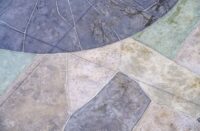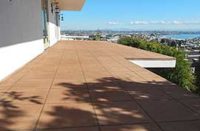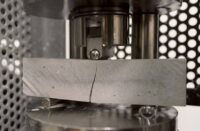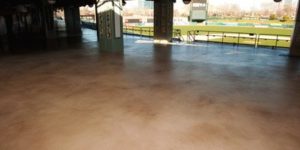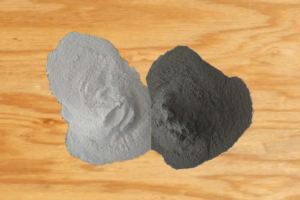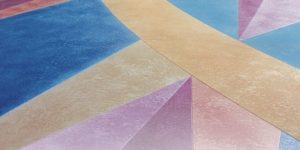As you look at some of the more commonly used overlay products, you can get a better sense of what might work best for your project. Lee Tizard, vice president of Floric Polytech Inc., offers this snapshot look at some overlay options:
- Self-leveling products provide monolithic, very consistent color.
- Stampable overlays have their roots in patch and repair products. Formula modifications make them easy to use and versatile.
- Microtoppings come in different formulations. Low cement/high polymer products are softer and more flexible. Low polymer/high cement products are more brittle, but have higher compressive strength. And there are combinations, such as applying a coarse microtopping for build and then a fine microtopping on top for a refined smooth finish.
- Splatter/knock-down texture finishes could be considered to fall into the category of coarse microtoppings.
- Cementitious mortar finishes are another option for some projects. But they are very labor intensive, especially for large areas.
- Epoxy mortar toppings are primarily an industrial flooring application. They have more resilience than a self-leveling product, with high compressive strength and more impact resistance, plus they have the aesthetics of polished concrete.
- Beyond these overlays, you get into cementitious and epoxy terrazzos, which can be costly.
